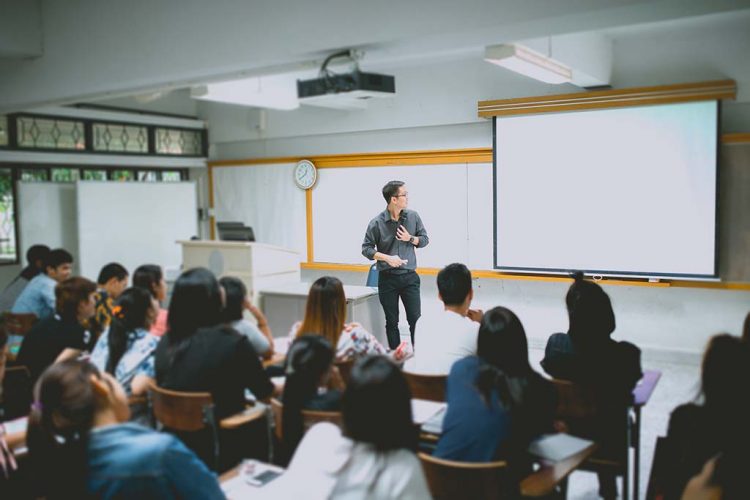Top Primary Science Tuition Singapore to Help Your Child Excel
Top Primary Science Tuition Singapore to Help Your Child Excel
Blog Article
A Comprehensive Guide to the Different Discovering Techniques in Primary Scientific Research Guideline
The expedition of diverse learning approaches in main science guideline provides a chance for educators to boost trainee engagement and understanding considerably. By analyzing hands-on learning strategies, inquiry-based techniques, and collaborative approaches, we can determine reliable methods that accommodate different finding out designs. Additionally, the assimilation of technology and set apart instruction plays an essential duty in fostering a comprehensive environment. The inquiry remains: exactly how can these approaches be effectively carried out in the class to optimize their effect? The solution hinges on a more detailed assessment of each technique and its effects for teaching science.

Hands-On Discovering Strategies
Hands-on learning techniques play a critical duty in key scientific research instruction, engaging students in active exploration and experimentation. These techniques permit students to connect straight with sensations and materials, promoting a deeper understanding of clinical principles. By making use of manipulatives, versions, and real-life experiments, instructors develop a setting where trainees can observe, assume, and check their ideas.
Such methods not just improve comprehension but also grow essential reasoning and analytic abilities. When pupils take part in tasks like developing easy devices, growing seeds, or performing chain reactions, they are motivated to ask concerns and seek responses through their own observations. This experiential approach aids to demystify complicated clinical principles, making them more available and relatable.
In addition, hands-on discovering promotes cooperation amongst peers, as pupils commonly function in teams to carry out experiments or share findings. This synergy not only improves their learning experience yet likewise creates necessary social skills. Eventually, integrating hands-on methods in key science instruction cultivates a lifelong love of discovering and curiosity regarding the environment, laying a solid foundation for future academic pursuits in scientific research and past.
Inquiry-Based Knowing
Inquiry-based understanding is an instructional strategy that encourages pupils to ask questions, check out phenomena, and build their very own understanding of scientific ideas. This approach shifts the focus from traditional teacher-led direction to an extra student-centered experience, where learners take the campaign in their instructional trip. By fostering interest, inquiry-based understanding promotes deeper interaction with the product, allowing trainees to discover subjects in a meaningful context.
In method, this method usually involves hands-on experiments, observations, and vital reasoning activities that align carefully with the scientific method. Pupils are urged to create theories, layout examinations, and assess information, which grows crucial abilities such as analytic and logical thinking. The role of the educator in this structure is to promote expedition, directing trainees with the inquiry procedure while motivating independent thought and collaboration.
Furthermore, inquiry-based knowing nurtures a feeling of ownership over the knowing process, inspiring students to pursue expertise proactively. This method not just boosts understanding of scientific concepts yet also promotes a lifelong love for understanding, gearing up students with the abilities essential to browse a progressively complicated globe.
Collaborative Understanding Approaches
Collective understanding methods equip pupils to participate in meaningful interactions with peers, cultivating a common responsibility for their educational results. In key scientific research instruction, these techniques urge learners to collaborate to check out scientific ideas, fix troubles, and perform experiments (primary science tuition Singapore). By taking part in group activities, students can take advantage of diverse point of views, try this website enabling richer understanding and retention of scientific understanding
One secret element of collective discovering is the emphasis on communication skills. Students should articulate their thoughts, listen actively to others, and negotiate concepts, every one of which are critical competencies in both real-world and academic contexts. This social communication not just boosts their understanding of clinical principles but also promotes synergy and dispute resolution skills.
Furthermore, collaborative learning often leads to raised inspiration and interaction. They are a lot more likely to take possession of their discovering journey when pupils see the worth of their contributions within a team. Teachers can facilitate this procedure deliberately organized group jobs that line up with curriculum objectives while offering advice on reliable collaboration strategies. Generally, incorporating collective learning techniques in primary science direction grows a dynamic understanding environment that prepares pupils for future academic and social difficulties.
Modern Technology Assimilation in Science
The combination of innovation in key science instruction improves discovering experiences by giving innovative tools and resources that support different training techniques, including collaborative knowing - primary science tuition Singapore. Making use of electronic platforms, simulations, and interactive applications permits pupils to involve deeply with clinical principles, helping with a much more hands-on technique to discovering
Online labs, as an example, allow learners to carry out experiments safely and efficiently, promoting inquiry-based learning. These tools can simulate real-world clinical circumstances, permitting trainees to picture complicated processes that would be difficult to reproduce in a typical class setting. Additionally, technology fosters interaction and partnership among pupils, as they can share searchings for and collaborate on tasks with on the internet platforms.
Furthermore, multimedia discussions and academic video clips can enhance lessons by catering to varied knowing designs, making abstract ideas more obtainable. Data evaluation tools additionally empower pupils to gather and analyze scientific information, reinforcing crucial assuming skills. In general, the strategic consolidation of modern technology in main scientific research instruction not just boosts interaction yet also prepares trainees for a highly advanced society, outfitting you can try here them with vital abilities for future scientific ventures.
Set Apart Instruction Methods
Differentiated direction methods are important for resolving the varied needs of learners in primary science education and learning. These approaches enable teachers to customize their mentor approaches to fit varying abilities, passions, and discovering styles within the classroom. By using differentiated instruction, instructors can produce a comprehensive atmosphere that cultivates involvement and boosts understanding of clinical concepts.
One efficient method is to utilize versatile grouping, which allows students to collaborate with peers at comparable ability degrees or with differing viewpoints. This strategy urges peer learning and advertises essential reasoning. Furthermore, providing choices in assignments can encourage trainees, allowing them to select projects that reverberate with their passions while still satisfying curricular goals.
Moreover, including tiered jobs is one more valuable technique. By making jobs with varying degrees of complexity, educators can make sure that all trainees are appropriately tested, no matter of their efficiency. Utilizing developmental assessments to determine comprehending further makes it possible for teachers to readjust their training approaches dynamically, making sure that each learner receives the assistance they need.
Eventually, implementing separated instruction methods in primary scientific research education not only enhances trainee learning results but likewise grows a passion for science, preparing pupils for future academic quests.

Verdict
In recap, effective main scientific research direction demands a diverse strategy that includes hands-on understanding, inquiry-based techniques, and collaborative strategies. The integration of innovation and differentiated direction better accommodates diverse understanding styles, promoting a setting for exploration and critical thinking. By applying these strategies, teachers can improve pupil involvement and comprehension, ultimately nurturing a long-lasting interest for scientific research and questions. Such comprehensive approaches are essential for developing informed and curious future researchers.
The expedition of diverse knowing methods in primary scientific research direction provides an opportunity for educators to improve trainee engagement and understanding dramatically.Hands-on understanding methods play a critical role in key scientific research direction, engaging pupils in active expedition our website and trial and error.Inquiry-based understanding is a training method that encourages pupils to ask questions, check out phenomena, and create their own understanding of clinical ideas.Collaborative learning techniques empower pupils to engage in purposeful interactions with peers, cultivating a shared duty for their academic outcomes. Generally, incorporating collaborative understanding methods in key science guideline cultivates a dynamic understanding atmosphere that prepares pupils for future academic and social difficulties.
Report this page